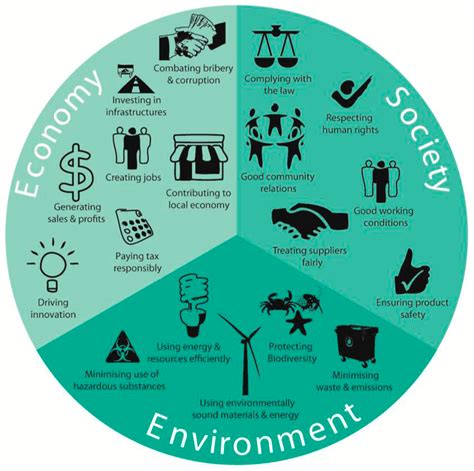Introduction

Understanding the complex relationship between the economy and the environment is crucial for sustainable development. Interpreting graphs and data provides valuable insights into this dynamic interplay, enabling policymakers, businesses, and individuals to make informed decisions for the future.
Economic Growth and Environmental Impact
- Greenhouse Gas Emissions: Economic activities such as energy consumption, transportation, and industrial production release greenhouse gases (GHGs), contributing to climate change. The World Bank estimates that global GHG emissions reached a record 53.5 gigatons of CO2 equivalent in 2019.
- Natural Resource Depletion: Economic growth often relies on the extraction and consumption of natural resources such as water, minerals, and fossil fuels. The United Nations Environment Programme (UNEP) reports that the world’s natural resource use has tripled since 1970, putting immense pressure on ecosystems.
Environmental Degradation and Economic Costs
- Air and Water Pollution: Industrial processes, transportation, and agriculture emit pollutants that degrade air and water quality. The World Health Organization (WHO) estimates that air pollution causes over 7 million premature deaths each year, while water pollution poses significant health and economic risks.
- Land Degradation: Unsustainable land use practices such as deforestation, agriculture, and mining can lead to soil erosion, water scarcity, and loss of biodiversity. The Convention on Biological Diversity (CBD) estimates that land degradation costs the global economy over $10 trillion annually.
The Environmental Kuznets Curve
The Environmental Kuznets Curve (EKC) is a graphical representation that suggests a relationship between economic development and environmental quality. It proposes that environmental degradation initially increases with economic growth but eventually declines as the economy becomes more advanced. However, empirical evidence for a universal EKC is mixed.
The Circular Economy and Sustainable Development
The circular economy is a model that aims to minimize waste and pollution by reusing, recycling, and remanufacturing materials. It offers both economic and environmental benefits by:
- Reducing Resource Consumption: The circular economy conserves natural resources and reduces the need for resource extraction.
- Creating New Jobs: The transition to a circular economy creates new opportunities for businesses and jobs in waste management, recycling, and innovation.
- Promoting Economic Resilience: By reducing resource dependence, the circular economy enhances economic resilience to environmental challenges such as climate change.
Common Mistakes to Avoid
When interpreting graphs and data on the economy and the environment, it is important to avoid common mistakes:
- Ignoring Data Quality: Ensure the data you use is reliable, accurate, and relevant to your analysis.
- Overgeneralizing Trends: Be cautious of drawing conclusions from short-term trends or small data sets. Consider long-term patterns and a broader context.
- Failing to Consider Multiple Variables: Economic and environmental issues are complex and involve a multitude of factors. Avoid attributing changes solely to one or two variables.
- Misinterpreting Correlation as Causation: Correlation does not necessarily imply causation. Establish clear cause-and-effect relationships before making inferences.
Conclusion
Interpreting graphs and data is an essential tool for understanding the relationship between the economy and the environment. By analyzing data carefully, policymakers, businesses, and individuals can make informed decisions that promote sustainable development. Embracing the circular economy and avoiding common mistakes will lead to a future where economic progress and environmental protection go hand in hand.
Tables
Table 1: Global GHG Emissions by Sector (2019)
| Sector | Emissions (GtCO2e) | Percentage |
|---|---|---|
| Energy | 36.7 | 68.6% |
| Industry | 13.3 | 24.9% |
| Agriculture | 5.5 | 10.3% |
| Other | 2.0 | 3.7% |
Table 2: Economic and Environmental Indicators
| Indicator | 2010 | 2020 |
|---|---|---|
| GDP (USD trillion) | 62.7 | 84.5 |
| CO2 Emissions (GtCO2e) | 30.1 | 36.3 |
| Energy Consumption (Mtoe) | 13,159 | 14,711 |
| Forest Area (Mha) | 39.4 | 37.6 |
| Water Scarcity (Population) | 1.7 billion | 2.3 billion |
Table 3: Benefits of the Circular Economy
| Benefit | Description |
|---|---|
| Resource Conservation | Reduces resource extraction and consumption. |
| Job Creation | Generates jobs in waste management, recycling, and innovation. |
| Economic Resilience | Enhances economic resilience to environmental challenges. |
Table 4: Common Mistakes to Avoid in Data Interpretation
| Mistake | Description |
|---|---|
| Ignoring Data Quality | Using unreliable or irrelevant data. |
| Overgeneralizing Trends | Drawing conclusions from short-term or small data sets. |
| Ignoring Multiple Variables | Failing to consider all relevant factors. |
| Misinterpreting Correlation as Causation | Assuming that correlation implies causation. |
